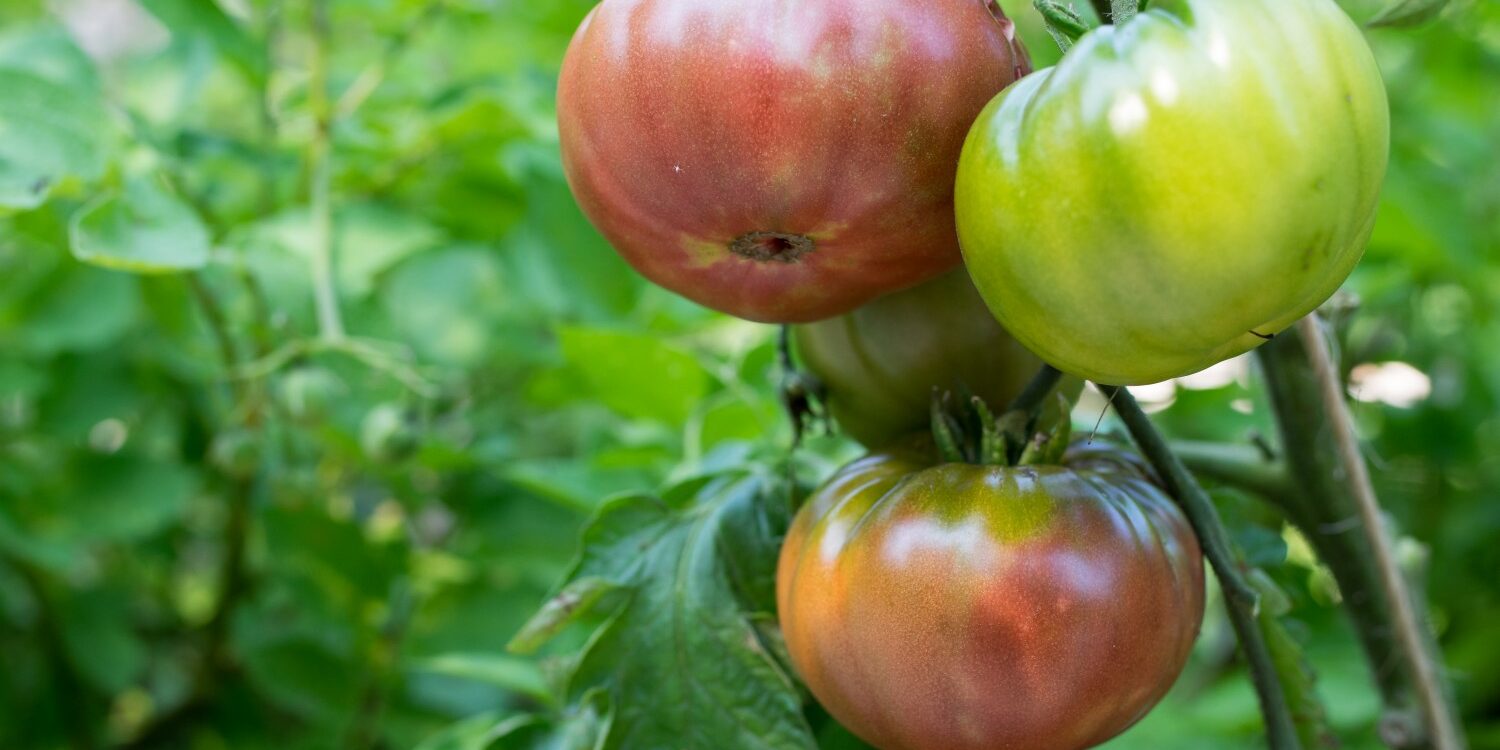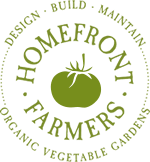
How To Plant, Trellis, Prune and Harvest Tomatoes
Tomatoes are native to Mexico and the Andes and are one of the most coveted of garden crops! They are a warm weather plant that grows best at 75 degrees. Full sunlight is ideal for the best yields, but 6 hours of direct sunlight is the bare minimum. Large fruited varieties need more sunlight than small fruited varieties like cherry tomatoes.
Tomatoes prefer a moderately rich, well-drained soil with an average to slightly acidic pH and require consistent moisture throughout the season. Excess or inadequate moisture may cause blossom end rot, a disorder which causes the blossom end of the fruit to rot; this is also more common with paste tomato varieties.
How To Plant Tomatoes
To plant your tomatoes, first gather your organic vegetable garden design, your plants, your fertilizer and a shovel. A mini shovel as shown is ideal. Your tomato should be about 12” tall before you plant.
Second, lay out your plants, where you want them to go in the organic vegetable garden.
Third, starting with your first tomato, dig a deep hole with your mini shovel, about 6-10” deep. Do you see those little hairs on the tomato stem? Those will turn into roots if buried. Therefore, the goal is to bury about half your tomato stem underground (again, the tomato plant should be about 12” tall), so bury about 4-6” of stem.
Squeeze the tomato pot to loosen, then gently remove the tomato from the pot. Place the plant in the bottom of the hole and back-fill just a few inches of soil around the roots. Sprinkle some fertilizer right on top of the roots and water it in with regular water or diluted fish emulsion for a burst of Nitrogen.
Back-fill your organic garden soil the rest of the way and smooth it out around the plant so the soil is nice and level. Then water your tomato again with water or diluted fish emulsion.
There is debate in the organic gardening world as to whether you should prune off the lower branches that get buried. Some say pruning the tomato plant before burying can cause injury and provide an opening for pathogens. Others say pruning is the way to go. In reality, either way is fine. The most important thing is that you bury a good 4-6” of stem so that your plant can have the biggest root system possible.
Keep your tomatoes well watered until they get established. Water can be cut back later in the season when fruit is being produced to encourage a more concentrated flavor.
Vegetable Garden Trellising and Pruning:
While many local gardeners employ tomato cages to support their tomato plants, these contraptions often result in a dense, bush-like plant that causes small fruit set, slower ripening, and the perfect environment for fungal and disease problems to percolate.
To avoid these issues, we prune our tomatoes to a single leader and support the vines using a wooden trellis, twine and special tomato clips to utilize vertical space and achieve healthier, more productive plants. We construct a simple wooden trellis with 2’ x 2” piece of wood to match the aesthetic of our raised bed gardens design, and hang each tomato plant from a single string off the trellis, attached with special, biodegradable tomato clips.
This enables us to prune the plant to a single main stem or “leader”, instead of leaving the plant to bush out. As the plant grows tall, it will eventually reach the top of the vegetable garden trellis, and then we will lower the entire plant with the string as it grows. Since fruit is harvested from the bottom of the plant and lower branches are pruned off as the fruit matures, lowering the plant will only result in a base stem coiled on the ground and the newer growth will still be suspended in the air.
With this method, you get an open canopy that readily dries out after precipitation (helping to
prevent fungal and disease issues), a larger fruit set, faster ripening, and a healthier all-around
plant since more sunlight is able to get down onto the leaves and fruit.
***Please note that this method only works with indeterminate varieties of tomatoes. Determinate varieties should not be prune because this will vastly reduce their yield; they have been bred to bush out and produce all their fruit at once.***
How do you prune a tomato to a single leader? Basically, you need to find all of the suckers and make sure to prune them out of the plant. A sucker is essentially a new growth point that grows at a 45 degree angle out of the armpit between the main stalk and a branch. If left to their own devices, suckers will grow large and create their own fruit, branches and even more suckers. While this seems like a great thing, it creates a dense canopy where fruit has trouble ripening and plants are more likely to become diseased. So prune out all of your suckers to keep plants cleaned up and healthy.
You will also want to prune off any branches that are low on the plant and dragging on the ground since this can also cause disease. Keep any yellowing or diseased leaves pruned off the plant as well. Sanitize your scissors after pruning anything diseased off a plant, before you prune another healthy plant.
When To Harvest Tomatoes:
Tomatoes are ready to be picked when they have turned from green to whatever color that variety should be: red, yellow, orange, etc. Some tomatoes show their readiness when they separate easily from the plant. Others, like beefstakes, may need to be cut off and are ready when the bottom is soft and has turned color but the shoulders are still green.
To store, turn your tomatoes upside down and keep them on the kitchen counter. The shoulders are the toughest part of the fruit and the best part to come into contact with the counter. Do not put your tomatoes in the refrigerator; this will ruin the texture of the fruits.
Eat your tomatoes fresh, cooked, or freeze and save them for later in the winter!
Interested in having your own enclosed vegetable garden? Contact the professional farmers at Homefront for local organic gardening services in Connecticut and New York.
Share this entry
Homefront Farmers Blog
Crop Planner
Our Crop Planner offers a bounty of choices…. vegetables, herbs, edible flowers, fruit trees and bushes, so there is always something growing, flowering, ripening and ready to pick. Here are some examples of what we have pre-selected for you, and if you don’t see a variety you like, we will do our best to grow it for you. Homefront Farmers has the best varieties for cultivation in Connecticut.







